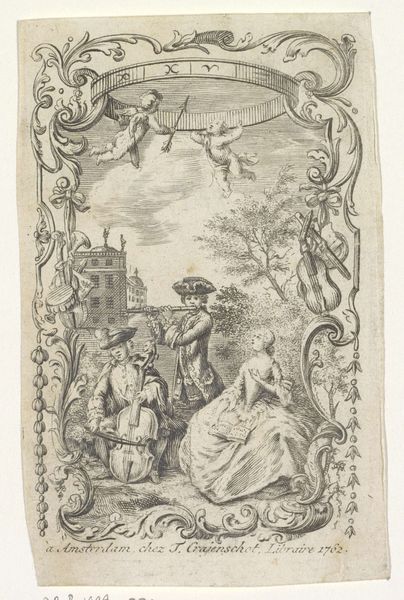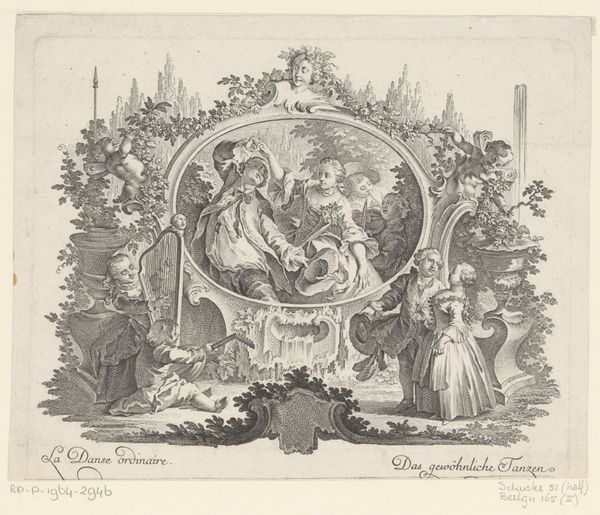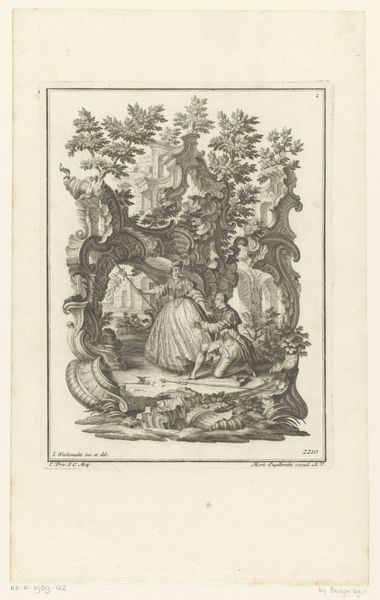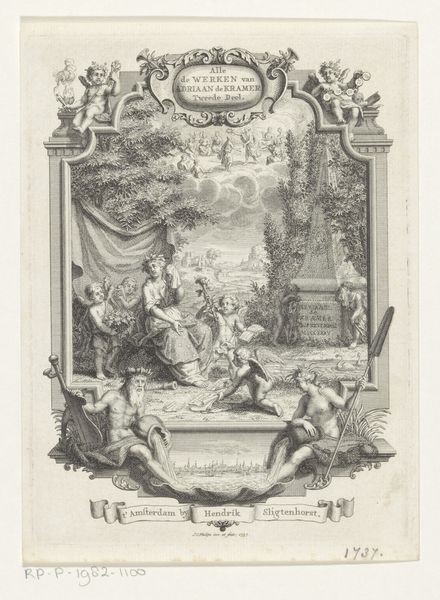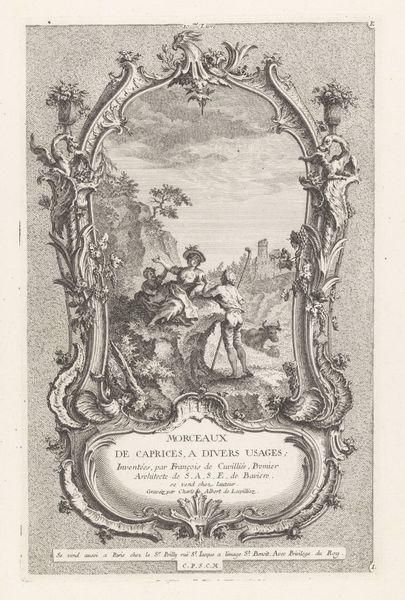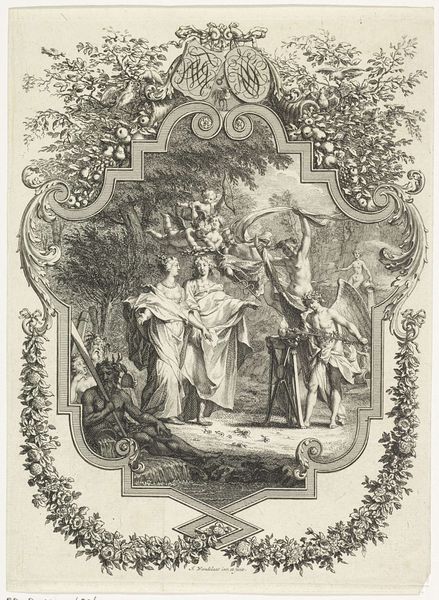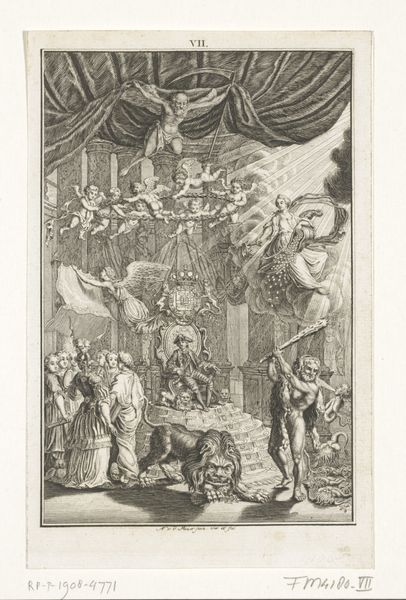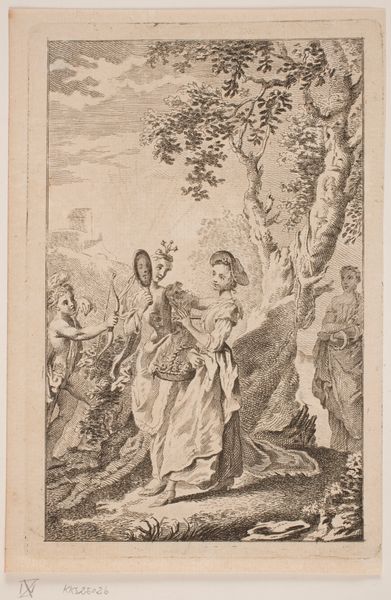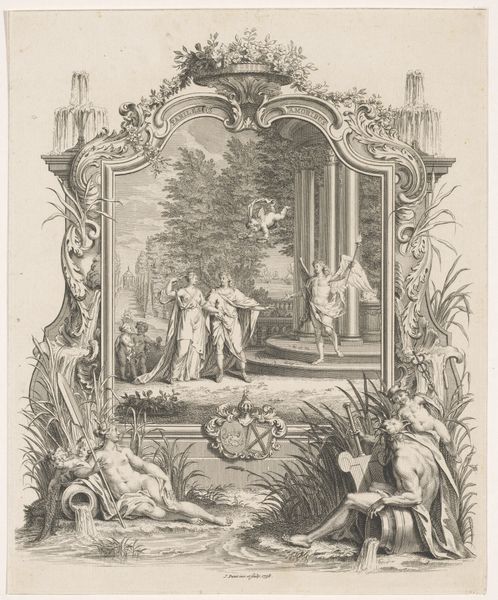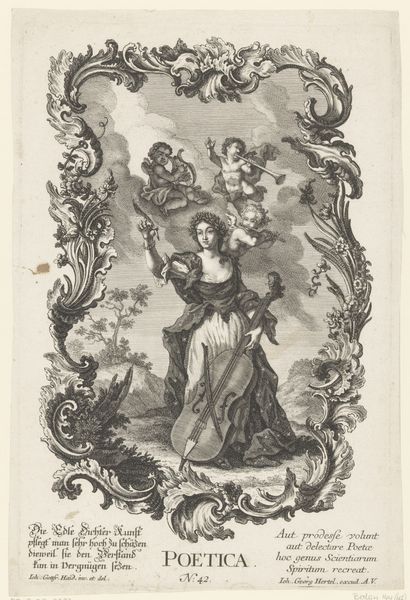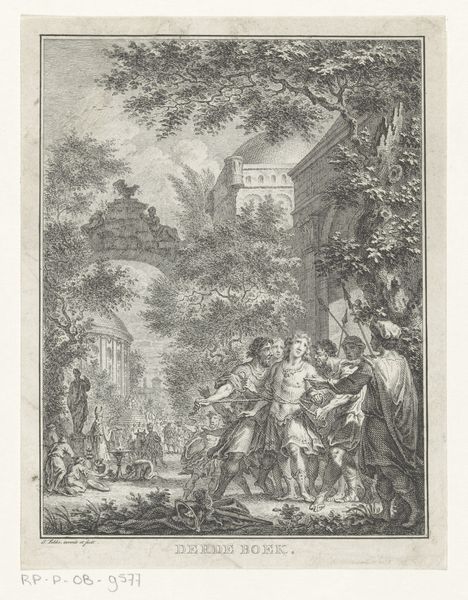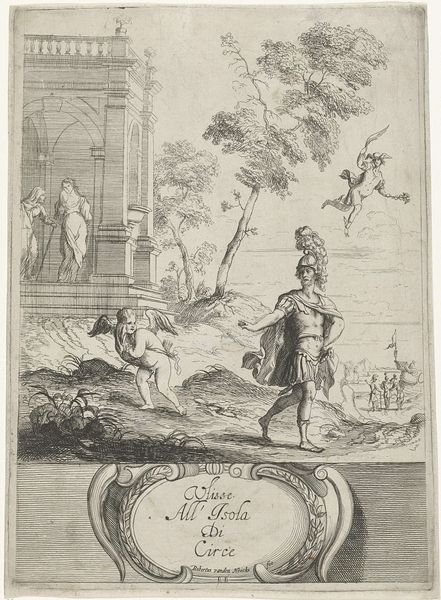
print, engraving
#
baroque
# print
#
figuration
#
genre-painting
#
history-painting
#
engraving
Dimensions: height 290 mm, width 194 mm
Copyright: Rijks Museum: Open Domain
Curator: Let's turn our attention to "Elisie (...)," an engraving by Johann Esaias Nilson, dating from sometime between 1731 and 1788. It’s part of the Rijksmuseum's collection. Editor: My first impression is that this composition is incredibly intricate, almost theatrical. The baroque framing with those delicate swirls feels like looking through a stage set at a carefully arranged scene. Curator: It’s an allegorical scene, rife with the themes of courtship and societal expectations. Think about the positioning of the figures, their attire, and even the surrounding landscape – it’s all constructed to communicate status, desire, and power dynamics. Editor: The artist has managed to suggest so much variation of texture with simple lines. Note how the lines describing fabric are carefully spaced versus the ones describing plants and the ornate, scrolling frame, yet somehow remains visually unified despite this contrast. The different types of lines produce incredible variety. Curator: Considering the period, and Nilson’s background, it's easy to interpret this work within the context of class and social mobility. Who are these characters meant to represent, what commentary are they suggesting about the hierarchies of their time? Are they noble persons pretending to be farmers in love, which are just tropes borrowed from commedia dell'arte and Italian pastoral dramas? Editor: And that delicate engraving highlights how much an artist can accomplish without heavy tonality. He leads your eyes throughout the composition using very controlled but subtle changes to texture and tone with his controlled line. Curator: And in those details, we glimpse how gender roles and societal expectations shaped these characters' lives. Do these figures occupy the narrative actively or are they confined to a script someone else designed for them? Editor: Absolutely. Reflecting on the work from a formalist perspective gives us an appreciation for how the composition’s different zones work in relation to one another; it has an intrinsic balance achieved through these controlled tonal changes. Curator: When viewed from an intersectional perspective, "Elisie (...)" provides insights into 18th-century class structures and questions whether art provides accurate depictions of culture, or does it reflect the privileged position of the ruling class. Editor: It makes me look deeper into this fascinating and technically superb composition.
Comments
No comments
Be the first to comment and join the conversation on the ultimate creative platform.
